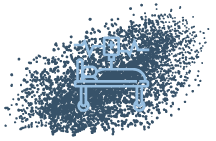Hidden Harms
Drugs and medical devices save lives every day, but they can also lead to serious pain or injury—and even death. In some cases, these dangerous side effects happen with surprising frequency.
Select a Drug or DeviceDo You Know Your Risk?
We’ve examined data from tens of thousands of adverse event reports and hundreds of clinical trials and studies to highlight the risks of some of the more troublesome drugs and medical devices. We then compared them to everyday risks—such as delayed flights and dog bites—to put them in context. The results presented below may surprise you. Explore the risks now.
What We Learned About Hidden Harms
What we found was surprising, even for those of us who read daily reports about dangerous drugs, faulty medical devices and defective consumer products. Some of these risks were unknown, while others had warnings buried so deep in prescription labels that almost nobody would read them. Those who did likely could not understand the warnings, because they’re written in medical jargon that thwarts even many experienced doctors.
Accountability & Action
Every year, thousands of people who are hurt by drugs and medical devices file lawsuits against the companies who hid their harmful effects from the public. It’s time to bring these hidden harms to light and hold the manufacturers, marketers and distributors accountable for their failure to disclose problems with their products. If you know someone who has suffered, share this page with them and tell them to get help today.
What Should I Do If I’ve Been Harmed by a Drug or Device?
Report a Dangerous Product
Alert the authorities to problems you’ve experienced with a harmful consumer product.
Report Adverse Events
Tell the FDA about serious drug or device side effects.
Research Your Rights
Investigate your options for legal recourse after using a harmful drug or device.
Get a Free Case Review
Have an experienced lawyer evaluate your case for no charge.
Methodology
How We Created Hidden Harms
Drug and Medical Device Harms
To uncover the real-world impact of Hidden Harms, we needed to gather several pieces of information from reliable sources:
- Complete list of side effects for each drug or medical device
- The number of patients experiencing each side effect
- The time period in which the side effects were monitored
- The total number of patients who used the drug or medical device in that time period
We started this process by pulling records from the FDA’s Adverse Event Reporting System (FAERS) and the Manufacturer and User Facility Device Experience database (MAUDE). These databases could theoretically provide the first three pieces of information listed above, though MAUDE, in particular, would require a substantial amount of effort.
For drugs, we found the total number of prescriptions in a given time period using the ClinCalc Drug Stats database. We found the corresponding information for medical devices from public manufacturer filings where possible. When this information was excluded from public filings, we used information provided by a manufacturer representative to a reputable news outlet. In cases where none of these methods provided reliable information, we searched PubMed for studies of the specific drug or device in question.
We did not combine data from multiple studies to create average or conglomerate incidence for any adverse event. Each risk statement in the Data Explorer comes from a single clinical trial, study or database. In the case of pregnancy after Essure sterilization, we did include one data point from a mathematical modeling manuscript. It was the only study to quantitatively assess this risk in a time frame relevant to that of the implant, and the authors used information from 13 separate studies to do so.
For each side effect, we found at least two data points. If they were substantially different, we chose to include data from whichever study had more of the following qualities:
- Higher Sample Size
- Longer Follow-Up
- Real-World Data
In our opinion, these qualities represent information more likely to reflect the experience of the average person using these drugs or devices.
Within the timeframe of our investigation, news broke that MAUDE was missing millions of reports due to an extensively exploited reporting loophole. This loophole affected several of the devices in our investigation. Though the FDA has recently made these reports public, they lack the depth of information available from typical MAUDE database entries. Nonetheless, we analyzed data from more than 50,000 MAUDE reports. In every case, MAUDE reports underestimated the frequency of side effects in comparison to clinical and post-market studies.
Everyday Risks
For estimating the frequency of everyday risks, we used data from trustworthy sources, including:
- Government Reports
- Published Studies
- Reputable News Outlets
In some cases, everyday health risks were reported as risk for a specified duration of time. We standardized these data points to lifetime risk by dividing the yearly risk by the average United States life expectancy for the year in which the risk was initially determined. We determined average United States life expectancy from the Centers for Disease Control’s National Center for Health Statistics reports.
Comparing Risks
Our goal in creating Hidden Harms is to raise awareness of the risks buried in (or missing from) drug and device labels by providing easy-to-understand, relatable information. We believe the key to achieving this goal is ensuring that people can see how drug and device risks compare to risks they or someone they know have personally experienced.
That being said, it is nearly impossible to calculate the true lifetime frequency of drug and medical device problems from studies lasting only a couple of years. In most cases, the chance of injury or failure changes over time. Some problems occur more frequently at the start of a drug’s use or implantation of a device. Others do not occur for years but become more common the longer the drug or device is used.
With this in mind, we did not standardize drug and device risks to lifetime risk as we did with everyday risks. Doing so would have misrepresented the frequency of almost every malfunction and side effect we studied. Instead, we chose to include the risk time period in the Compare the Risks portion of the Risk Explorer.
In this way, we accurately represent the real-world frequency of drug and medical device problems while providing relatable context in the form of everyday lifetime risks.
Sources
-
- 1 Kamencic H, Thiel L, Karreman E TJ. Does Essure Cause Significant De Novo Pain? A Retrospective Review of Indications for Second Surgeries After Essure Placement. J Minim Invasive Gynecol. 2016;23(7):1158-1162. doi:10.1016/j.jmig.2016.08.823
- 2 Yunker AC, Ritch JM, Robinson EF GC. Incidence and risk factors for chronic pelvic pain after hysteroscopic sterilization. J Minim Invasive Gynecol. 2015;22(3):390-394.
- 3 Gariepy AM, MD C, KJ S, X X. Probability of pregnancy after sterilization: A comparison of hysteroscopic versus laparoscopic sterilization. Contraception. 2014;90:174-181.
-
- 1 Finkle WD, Greenland S, Ridgeway GK, et al. Increased Risk of Non-Fatal Myocardial Infarction Following Testosterone Therapy Prescription in Men. Gong Y, ed. PLoS One. 2014;9(1):e85805. doi:10.1371/journal.pone.0085805
- 2 Basaria S, Coviello AD, Travison TG, et al. Adverse Events Associated with Testosterone Administration. N Engl J Med. 2010;363(2):109-122. doi:10.1056/NEJMoa1000485
-
- 1 Alza Corporation. Final Draft Labeling For Concerta(TM) Extended-Release Tablets: Attachment to Approval Letter. 2000.
- 2 Janssen Pharmaceuticals. Concerta Highlights of Prescribing Information. 2013.
-
- 1 Boehringer Ingelheim Pharmaceuticals. Pradaxa Highlights of Prescribing Information. 2010.
-
- 1 Cheng D, L B, Leinkram C. Infection and recurrence rates of the C-QUR V-PatchTM in ventral hernia repairs. Hernia. 2018;22(5):767-772. doi:10.1007/s10029-018-1791-3
- 2 Köckerling F, Simon T, Hukauf M, et al. The Importance of Registries in the Postmarketing Surveillance of Surgical Meshes. Ann Surg. 2018;268(6):1097-1104.
-
- 1 Mokka J, Junnila M, Seppänen M, et al. Adverse reaction to metal debris after ReCap-M2A-Magnum large-diameter-head metal-on-metal total hip arthroplasty. Acta Orthop. 2013;84(6):549-554. doi:10.3109/17453674.2013.859419
- 2 Aguado-Maestro I, Cebrián Rodríguez E, Paredes Herrero E, et al. Midterm results of Magnum large head metal-on-metal total hip arthroplasty. Rev española cirugía ortopédica y Traumatol. 2018;62(5):310-317.
-
- 1 Nicholson W, Nicholson WJ, Tolerico P, et al. Prevalence of Fracture and Fragment Embolization of Bard Retrievable Vena Cava Filters and Clinical Implications Including Cardiac Perforation and Tamponade. Arch Intern Med. 2010;170(20). doi:10.1001/archinternmed.2010.316
- 2 Montgomery J, Kaufman J. A Critical Review of Available Retrievable Inferior Vena Cava Filters and Future Directions. Semin Intervent Radiol. 2016;33(02):079-087. doi:10.1055/s-0036-1582121
-
- 1 Yang Y-X, Lewis JD, Epstein S, Metz DC. Long-term Proton Pump Inhibitor Therapy and Risk of Hip Fracture. JAMA. 2006;296(24):2947. doi:10.1001/jama.296.24.2947
- 2 Xie Y, Bowe B, Li T, Xian H, Balasubramanian S, Al-Aly Z. Proton Pump Inhibitors and Risk of Incident CKD and Progression to ESRD. J Am Soc Nephrol. 2016;27(10):3153-3163. doi:10.1681/ASN.2015121377
- 3 Zhou B, Huang Y, Li H, Sun W, Liu J. Proton-pump inhibitors and risk of fractures : an update meta-analysis. 2015. doi:10.1007/s00198-015-3365-x
-
- 1 Pécheux O, Giraudet G, Drumez E, et al. Long-term (8.5 years) analysis of the type and rate of reoperation after transvaginal mesh repair (Prolift®) in 349 patients. Eur J Obstet Gynecol Reprod Biol. 2019;232:33-39. doi:10.1016/j.ejogrb.2018.10.009
-
- 1 White WB, Saag KG, Becker MA, et al. Cardiovascular Safety of Febuxostat or Allopurinol in Patients with Gout. N Engl J Med. 2018;378(13):1200-1210. doi:10.1056/NEJMoa1710895
-
- 1 Gupta RS, Springston EE, Warrier MR, et al. The Prevalence, Severity, and Distribution of Childhood Food Allergy in the United States. Pediatrics. 2011;128(1):e9-e17. doi:10.1542/peds.2011-0204
-
- 1 Risk of Death: 18 Things More Likely to Kill You Than Sharks. International Shark Attack File.
-
- 1 1. Lieberman J, Sublett J, Ali Y, et al. Increased Incidence and Prevalence of Peanut Allergy in Children and Adolescents in the United States. Ann Allergy, Asthma Immunol. 2018;121(5):S13. doi:10.1016/j.anai.2018.09.039
-
- 1 Ebeling A. IRS Official Audit Rate Down But The "Real" Audit Rate Is The Problem. Forbes. March 29, 2018.
-
- 1 Duryee T. Report: Amazon packages do occassionally arrive late - but no more than average. GeekWire. February 1, 2018.
-
- 1 Risk of Death: 18 Things More Likely to Kill You Than Sharks. International Shark Attack File.
-
- 1 Air Travel Consumer Report. Office of Aviation Enforcement and Proceedings; 2019.







